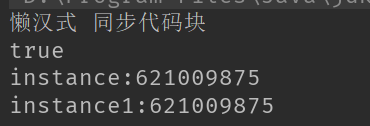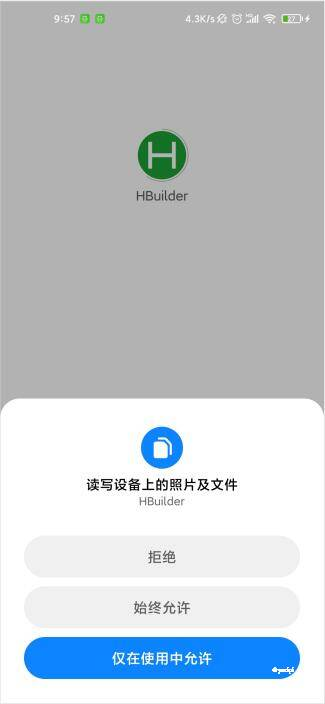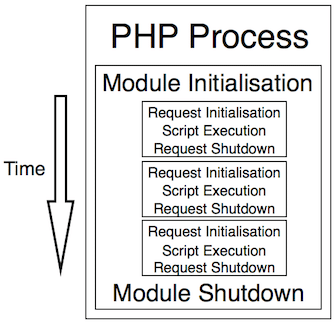Head First Design Patterns——单例模式
文章目录
- 1)饿汉式(静态常量)
- 2)饿汉式(静态代码块)
- 3)懒汉式(线程不安全)
- 4)懒汉式(线程安全,同步方法)
- 5)懒汉式(线程安全,同步代码块)
- 6)双重检查(推荐使用)
- 7)静态内部类(推荐使用)
- 8)枚举方式
单例模式:也叫单件模式,可以用来创建独一无二的,只能有一个实例的对象,并且该类只提供一个取得其对象实例的方法(static)!它是所有设计模式中最简单的,它的类图只有一个类:
1)饿汉式(静态常量)
创建的步骤:
1.构造器私有化(防止 new来获得实例)
2.类的内部创建对象
3.向外界暴露一个静态的公共方法。getInstance
4.代码实现
//饿汉式(静态变量)class Singleton{//1.构造器私有化private Singleton(){}//2.本类内部创建对象实例private final static Singleton instance = new Singleton();//3.提供一个公有的静态方法,返回实例对象public static Singleton getInstance(){return instance;}}public class Singleton1 {public static void main(String[] args) {Singleton instance = Singleton.getInstance();Singleton instance1 = Singleton.getInstance();System.out.println("instance:"+instance.hashCode()+"\n"+"instance1:"+instance1.hashCode());}}
- 测试结果

两个对象实例的hashCode值相等,说明 new的两个对象是同一个,这样就避免了new实例多个对象! - 优缺点:
优点:这种写法比较简单,就是在类装载的时候就完成 了实例化,避免了线程同步问题。
缺点:
1.在类装载时就完成 了实例化,油源有达到Lazy Loading的效果,如果从始至终从未使用过这个实例,则会造成内存的浪费。
2.这种方式基于classLoader机制避免了多线程的同步问题,不过,Instance在类装载时就实例化,在单例模式中大多数都是调用getInstance方法,但是导致类装载的原因有很多种,因此不能确定有其他的方式导致类装载,这时候初始化instance就没有达到Lazy Loading的效果。
- 结论:
这种单例模式可用,可能会造成内存浪费!
2)饿汉式(静态代码块)
这和方式和静态常量方法类似 ,只是在内部将创建实例对象的操作放到了静态代码块中进行了
代码实现
//饿汉式(静态代码块)
class Singleton{
//1.构造器私有化private Singleton(){}//2.本类内部创建对象实例private final static Singleton instance;static { //在静态代码块中创建单例对象instance = new Singleton();}//3.提供一个公有的静态方法,返回实例对象public static Singleton getInstance(){return instance;}
}
public class Singleton2 {
public static void main(String[] args) {Singleton instance = Singleton.getInstance();Singleton instance1 = Singleton.getInstance();System.out.println("instance:"+instance.hashCode()+"\n"+"instance1:"+instance1.hashCode());}
}
运行结果

- 结论:
这种单例模式也是可用的,但是可能会造成内存浪费
3)懒汉式(线程不安全)
代码实现
public class SingletonTest03 {
public static void main(String[] args) {Singleton instance = Singleton.getInstance();Singleton instance1 = Singleton.getInstance();System.out.println(instance == instance1);System.out.println("instance:"+instance.hashCode()+"\n"+"instance1:"+instance1.hashCode());}
}
class Singleton{private static Singleton instance;private Singleton(){ }//提供一个静态的公有方法,使用到该方法时,才去创建instancepublic static Singleton getInstance(){if (instance == null) {instance = new Singleton();}return instance;}}
- 运行结果

- 总结:
提供一个静态的公有方法,使用到该方法时,才去创建instance
1.起到了Lazy Loading的效果,但是只能在单线程下使用
2.如果在多线程下,一个线程进入了if(singleton == null)判断语句时,还未来得及往下执行,另一个线程也通过了这个判断语句,这时便会产生多个实例。所以在多线程环境下不可使用这种方式
- 结论:
在实际开发中,不要使用这种方式。
4)懒汉式(线程安全,同步方法)
代码实现
public class SingletonTest04 {
public static void main(String[] args) {System.out.println("懒汉式(线程安全,同步方法)");Singleton instance = Singleton.getInstance();Singleton instance1 = Singleton.getInstance();System.out.println(instance == instance1);System.out.println("instance:"+instance.hashCode()+"\n"+"instance1:"+instance1.hashCode());}
}
//懒汉式(线程安全,同步方法)
class Singleton{private static Singleton instance;private Singleton(){ }//提供一个静态的公有方法,加入同步处理的代码,解决线程安全问题//synchronizedpublic static synchronized Singleton getInstance(){if (instance == null) {instance = new Singleton();}return instance;}
}
运行结果

- 总结:
- 解决了线程不安全问题
效率太低了,每个线程都在想获得类的实例时候,执行getInstance()方法都要进行执行同步。而其实这个方法只执行一次实例化代码就够了,后面的想获得该实例,直接return 就行了,方法进行同步的效率太低了。
- 总结
在实际开发中,不推荐使用这种方式
- 总结
5)懒汉式(线程安全,同步代码块)
public class SingletonTest05 {public static void main(String[] args) {System.out.println("懒汉式 同步代码块");Singleton instance = Singleton.getInstance();Singleton instance1 = Singleton.getInstance();System.out.println(instance == instance1);System.out.println("instance:"+instance.hashCode()+"\n"+"instance1:"+instance1.hashCode());}}//懒汉式(线程安全,同步方法)class Singleton{private static Singleton instance;private Singleton(){ }//提供一个静态的公有方法,加入同步处理的代码,解决线程安全问题//synchronizedpublic static Singleton getInstance(){if (instance == null) {synchronized (Singleton.class) {instance = new Singleton();}}return instance;}}
- 运行结果

- 总结:
- 这种方式,本意是想对第四种方式的改进,因为前面同步方法效率太低了,改为同步 产生实例化的代码块。
但是这种同步并不能起到线程同步的作用。,假如一个线程进入到if(Singleton == null)判断语句块,还未来得及往下执行,另一个线程也通过了这个判断语句,这时便会产生多个实例。
- 结论:
在实际开发中,不能使用这种方式。
- 结论:
6)双重检查(推荐使用)
代码实现
public class SingletonTest06 {
public static void main(String[] args) {System.out.println("双重检查");Singleton instance = Singleton.getInstance();Singleton instance1 = Singleton.getInstance();System.out.println(instance == instance1);System.out.println("instance:"+instance.hashCode()+"\n"+"instance1:"+instance1.hashCode());}
}
//懒汉式(线程安全,同步方法)
class Singleton{private static volatile Singleton instance;private Singleton(){ }//提供一个静态的公有方法,加入双重检查代码,解决线程安全问题,同时解决懒加载问题//同时保证了效率public static Singleton getInstance(){if (instance == null) {synchronized (Singleton.class) {if (instance == null){instance = new Singleton();}}}return instance;}
}
运行结果

- 总结
- Double-Check概念是多线程开发中学使用到的,我们进行了两次if (instance == null)检查,这样就可以保证线程安全了
- 这样,实例化代码只执行一次,后面再次访问时,判断if (instance == null),直接 return实例化对象,也就避免了反复执行方法同步 。
线程安全,延迟加载,效率较高
- 结论:
在开发中,推荐使用这种单例设计模式!
- 结论:
7)静态内部类(推荐使用)
基本介绍:
- 静态内部类不会在类装载时,直接执行,保证了懒加载
在调用类中的方法时,再装载静态内部类,是可行的,JVM中进行类装载时是线程安全的
- 代码实现
public class SingletonTest7 {
public static void main(String[] args) {System.out.println("静态内部类:单例模式");Singleton instance = Singleton.getInstance();Singleton instance1 = Singleton.getInstance();System.out.println(instance == instance1);System.out.println("instance:"+instance.hashCode()+"\n"+"instance1:"+instance1.hashCode());}
}
//静态内部类
class Singleton{private static volatile Singleton instance;private Singleton(){ }//静态内部类private static class SingletonInstance{private static final Singleton INSTANCE = new Singleton();}//提供一个静态的公有方法,直接返回SingletonInstance.INSTANCEpublic static Singleton getInstance(){return SingletonInstance.INSTANCE;}
}
- 运行结果

- 总结
1.这种方式采用了类装载的机制来保证初始化实例时只有一个线程。
2.静态内部类方式在Singleton类被装载时并不会立即实例化,而是在需要实例化时,调用getInstance方法,才会被装载SingletonInstance类,从而完成Singleton的实例化。
3.类的静态属性只会在第一次加载类的时候初始化,所以在这里,JVM帮助我们保证了线程的安全性,在类进行初始化时,别的线程是无法进入的。
4.优点:避免了线程不安全,利用静态内部类特点实现延迟加载,效率高。
- 结论
推荐使用!
8)枚举方式
代码实现
public class SingletonTest08 {
public static void main(String[] args) {Singleton instance = Singleton.INSTANCE;Singleton instance1 = Singleton.INSTANCE;System.out.println(instance == instance1);System.out.println(instance.hashCode());System.out.println(instance1.hashCode());instance.sayHello();}
}
//使用枚举可以实现单例,推荐作用
enum Singleton{INSTANCE;public void sayHello(){System.out.println("hello enum");}
}
运行结果

- 总结:
1.借助JDK1.5中添加的枚举来实现单例模式,不仅可以避免多线程同步 问题,而且还能防止反序列化重新创建新的对象
- 结论:
强力推荐使用!!!

整理不易,如果大家觉得好的话,可以加关注,后续会整理更多的知识点!



































还没有评论,来说两句吧...